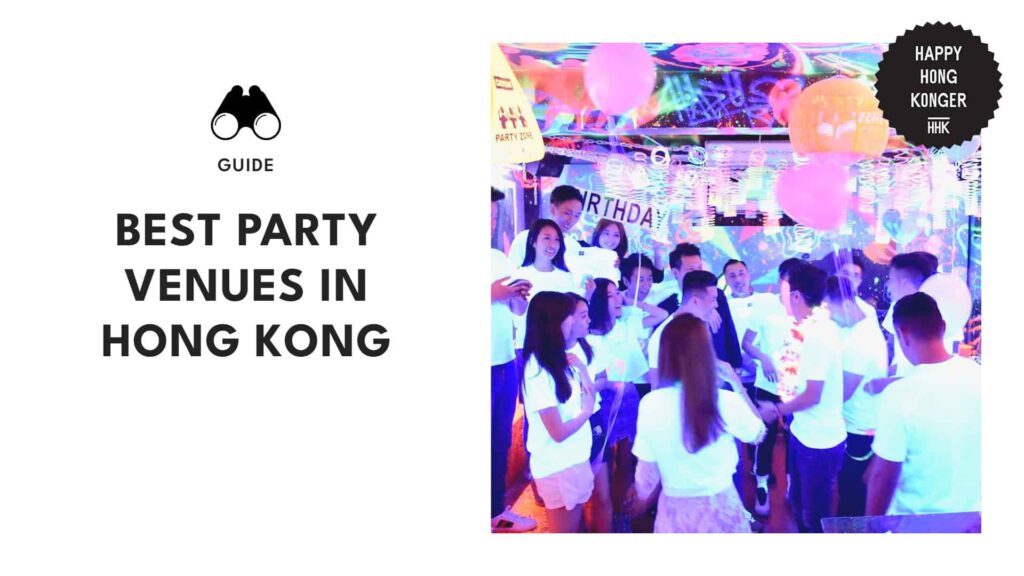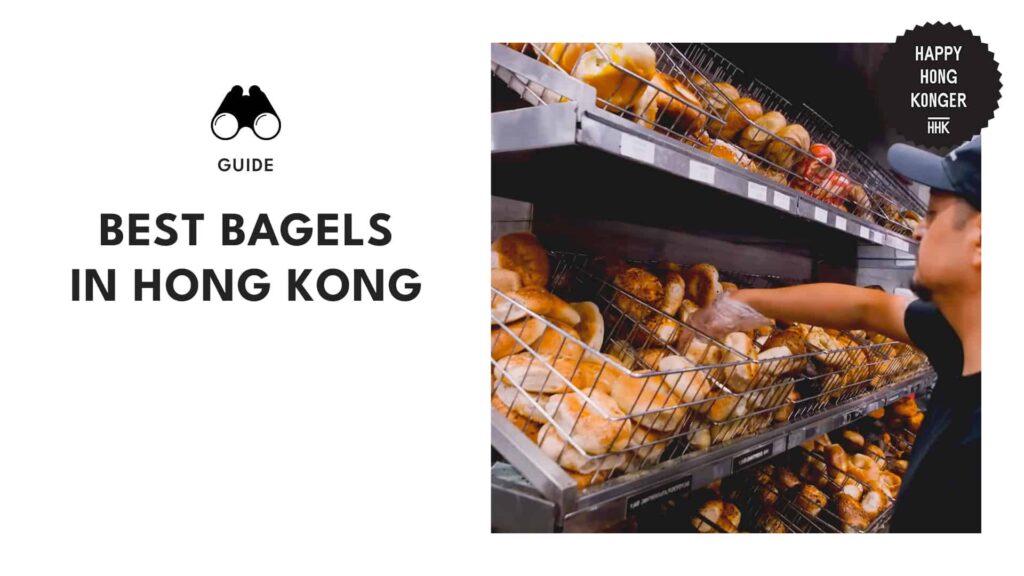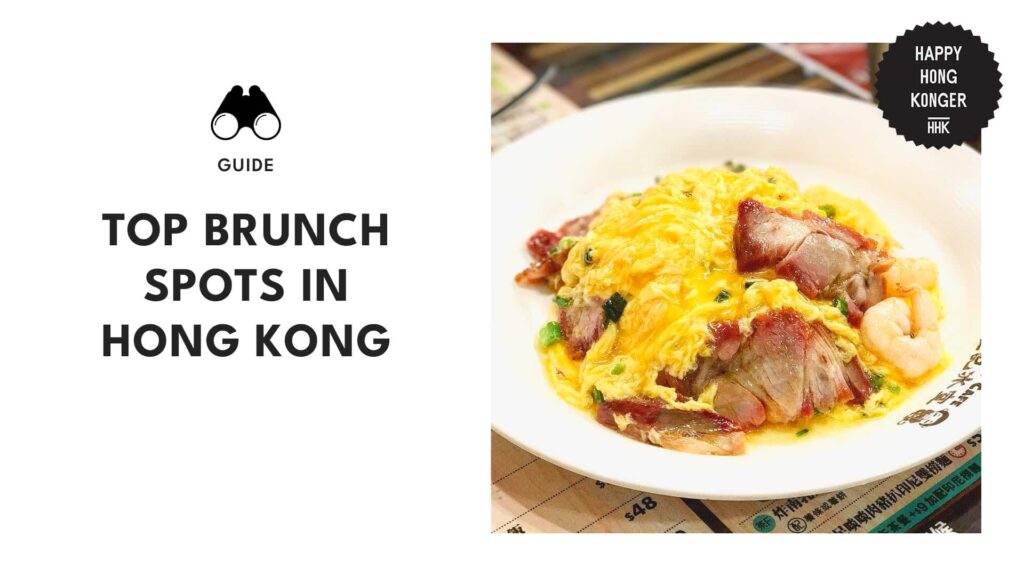Categories > Guides and Tips
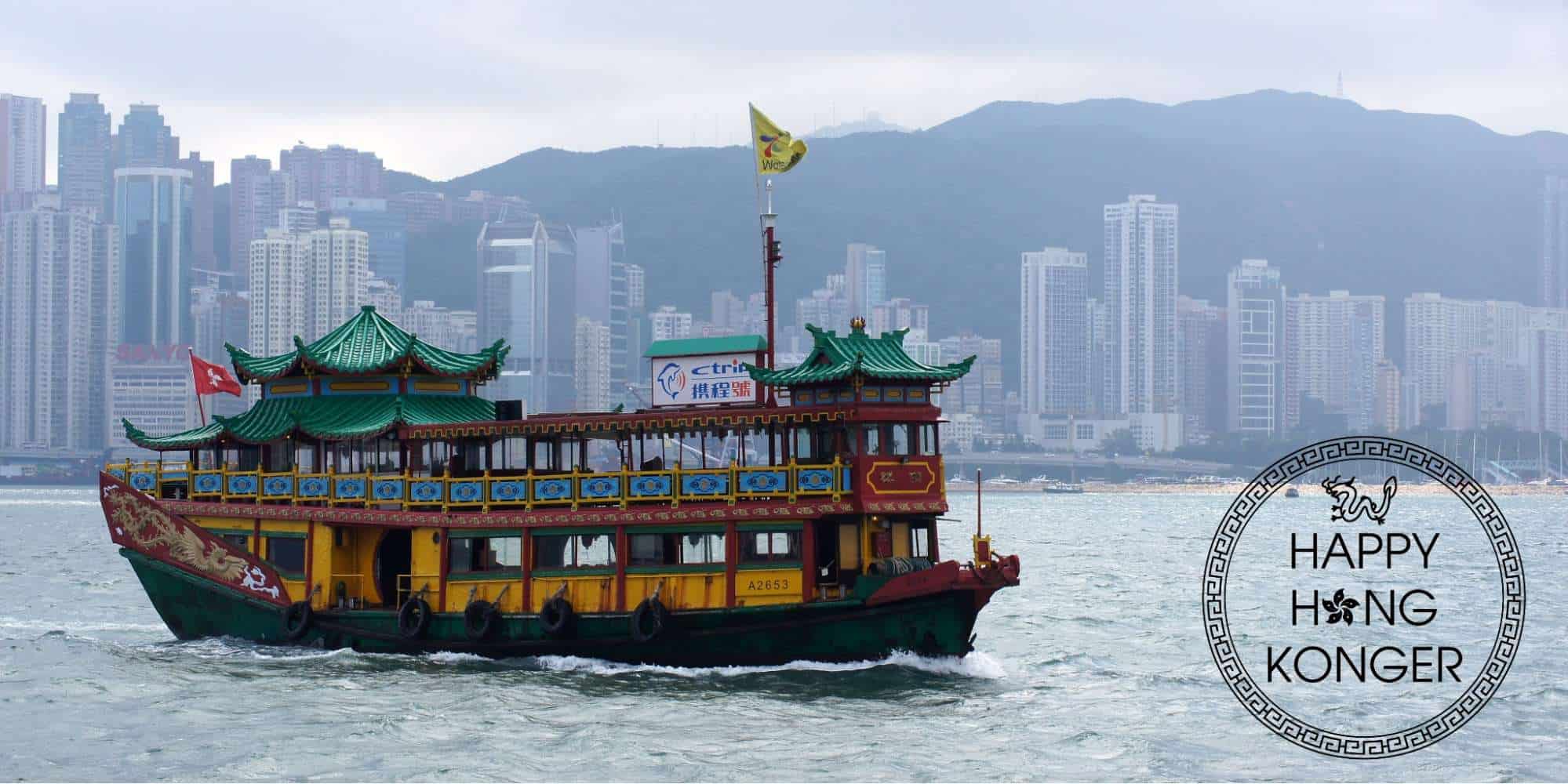
71 Facts About Hong Kong You Probably Didn’t Know
- Hong Kong used to be a British Colony.
- The first foreigner to enter Hong Kong was not British.
- Hong Kong was just an island before.
- The earliest settlers in Hong Kong date back over 30,000 years.
- Many people travelled to Hong Kong to seek refuge.
- Hong Kong has relaxed Visa policies.
- There are over 200 islands in Hong Kong now.
- Hong Kong returned to Chinese rule in 1997.
- To be clear, Hong Kong is not a country.
- Hong Kong locals prefer to identify as Hong Konger.
- Hong Kong has the longest life expectancy in the world.
- Hong Kong enjoys more religious freedom than the mainland.
- Hong Kong’s flag features an orchid.
- Hong Kong means “Fragrant Harbour.”
- Kowloon means “Nine Dragons”
- Some Hong Kongers have British nationalities.
- Cantonese is the primary language in Hong Kong.
- Hong Kong is one of the most densely populated areas in the world.
- The region has a mix of urban and rural areas.
- Hong Kong has over a hundred beaches.
- Hong Kong’s highest peak is an inactive volcano.
- One of Hong Kong’s major tourist attractions is also a mountain peak.
- Hong Kong is home to a handful of UNESCO geoparks.
- Hong Kong has the world’s most skyscrapers.
- Rugby is a big deal in Hong Kong.
- The Chinese New Year is also a big deal.
- Hong Kong also has an iconic clock tower.
- Feng Shui is still practised.
- Most Hong Kong buildings do not have 4th floors.
- The University of Hong Kong ranks as one of the best in Asia.
- The longest outdoor escalator is in Hong Kong.
- The Star Ferry has been operational since the 1880s.
- Hong Kong has the first funicular in Asia.
- Hong Kong also has the largest operational double-decker tram fleet.
- Hong Kong has one of the longest suspension bridges in the world.
- Hong Kong participates in the Olympics even though it’s not a country.
- Hong Kong operates in a mostly free-market economy.
- Mainland China is one of Hong Kong’s primary trading partners.
- Hong Kong changed industries over the years.
- Despite being a rich economy, Hong Kong relies on imports for most goods.
- Groceries in Hong Kong are expensive!
- Hong Kong also exports various goods worldwide.
- Hong Kong has a lot of billionaires.
- Hong Kong allegedly has the most Rolls Royce vehicles per capita
- Despite this, Hong Kong has one of the lowest car ownership rates.
- Hong Kong has the longest sea-crossing bridge in the world.
- Hong Kong has the world record for the highest swimming pool in a building.
- Typhoons are fairly common in the region.
- Fibre optics was invented by a Hong Kong professor.
- Hong Kong has a lot of restaurants.
- Speaking of restaurants, Hong Kong has some of the most affordable Michelin-star restaurants in the world.
- Dim Sum originated near Hong Kong
- Pineapple buns are widely popular in the region.
- One of the largest Buddhas is in Hong Kong.
- Hong Kong has a Disneyland.
- Action films boosted Hong Kong’s film industry.
- Hong Kong has its own music style.
- Hong Kong is one of the richest cities in the world.
- The Hong Kong International Airport is one of the busiest in the world.
- Hong Kong is also the home of Cathay Pacific.
- Hong Kong has the highest average IQ among its population.
- Hong Kong is very strict with firearms.
- Hong Kong is also strict when it comes to tobacco.
- Hong Kong’s education is free.
- Hong Kong is experiencing a grave shortage, in the literal sense.
- There are plaques in Hong Kong that commemorate a Philippine hero.
- Some museums in Hong Kong offer free entrance on Wednesdays.
- Some Hong Kongers have English names.
- Some teachers in Hong Kong are foreigners.
- Hong Kong has a housing crisis.
- Hong Kongers work long hours.
- There is a mass exodus happening in Hong Kong.
Hong Kong is a place known worldwide for its economy and cityscape. But how much do you actually know about the region?
Here are fun and interesting facts you probably didn’t know about Hong Kong!
1. Hong Kong used to be a British Colony.
China ceded the barren Hong Kong Island in 1841 to the British Empire and subsequently leased the region for 99 years. Because of this lease, Hong Kong was under British rule for over 150 years.
2. The first foreigner to enter Hong Kong was not British.
The first recorded non-Asian visitor to Hong Kong was Jorge Alvares, a Portuguese explorer who reached southern China during the Age of Discovery. He also began settlements on islands that are now part of Hong Kong.
3. Hong Kong was just an island before.
Hong Kong was initially composed of only Hong Kong Island until 1860, when the region expanded and included the Kowloon Peninsula.
4. The earliest settlers in Hong Kong date back over 30,000 years.
Stone tools were discovered in archaeological sites in Hong Kong, suggesting human activity in the region started around the Old Stone Age. Eventually, more people settled in Hong Kong during the Qin and Han dynasties.
5. Many people travelled to Hong Kong to seek refuge.
People seeking refuge entered Hong Kong in historic waves due to various reasons. Many of these refugees were people escaping Mao’s reign, the Vietnam War, and other political turmoils around the globe.
6. Hong Kong has relaxed Visa policies.
Visitors from over 140 countries can enter the region without a visa as long as they fit certain criteria. As such, most people can visit Hong Kong for business, social reasons, or leisure for around 7 to 180 days.
7. There are over 200 islands in Hong Kong now.
Hong Kong now comprises over 263 islands, with some remaining uninhabited and rural. These deserted islands can be visited to see a variety of awe-inspiring rock formations and natural wonders.
8. Hong Kong returned to Chinese rule in 1997.
When the lease to the British Empire expired, Hong Kong returned to Chinese rule on July 1, 1997. The handover gave Hong Kong its status as China’s special administrative region.
9. To be clear, Hong Kong is not a country.
Despite having its own economy and government, Hong Kong is not designated as a country. Hong Kong is an autonomous region of China until 2047.
10. Hong Kong locals prefer to identify as Hong Konger.
There are multiple surveys from the University of Hong Kong and the Hong Kong Public Opinion Research Institute that found that a majority of Hong Kong locals prefer to identify as Hong Konger instead of Chinese.
11. Hong Kong has the longest life expectancy in the world.
Over the past half-century, the life expectancies for both sexes in Hong Kong have steadily increased to over 80 years. Many attribute this length of life to accessible, greener cities, quality healthcare, good weather, a healthy diet, and low smoking rates.
12. Hong Kong enjoys more religious freedom than the mainland.
While the mainland is officially an atheist state and recognizes only five religions, Hong Kong’s population identifies primarily with “Chinese Folk Religions,” which include Confucian and Taoist doctrines. Hong Kong also has Christians, Buddhists, Hindus, Sikhs, and Jews.
13. Hong Kong’s flag features an orchid.
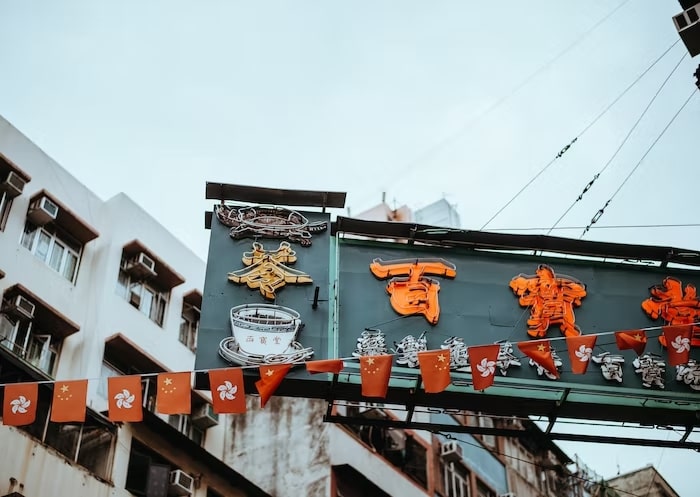
The Bauhinia blakeana, also known as the Hong Kong orchid tree, is the flower used in the Hong Kong flag. Its white petals signify unity and embody the rights and freedoms enjoyed by Hong Kongers under the one country, two systems policy.
14. Hong Kong means “Fragrant Harbour.”
The Cantonese name of Hong Kong is 香港 or “heung gong,” meaning “fragrant harbour.” Historians believe that this name originated from the prominent trade of incense in the area, which gave the region a pleasing aroma.
15. Kowloon means “Nine Dragons”
Kowloon, a territory in Hong Kong, also has an interesting story behind its name. Kowloon means “nine dragons,” which alludes to the eight mountains in the region and the status of the emperor that saw them.
16. Some Hong Kongers have British nationalities.
Some Hong Kongers voluntarily registered to be considered British National Overseas through the UK’s program. These registrants are residents of Hong Kong before the region’s handover to China and can apply to work, study, and live in Britain.
17. Cantonese is the primary language in Hong Kong.
Cantonese and English are the most spoken languages in Hong Kong, compared to Mandarin used for the rest of China.
This is because of the migration of large numbers of merchants from Canton to Hong Kong during the British occupation.
18. Hong Kong is one of the most densely populated areas in the world.
Hong Kong has an overall density of around 6,690 people per square kilometre. Most of the region’s population can be found in the New Territories and Kowloon.
19. The region has a mix of urban and rural areas.
Hong Kong is well-known all over the world for its bustling cities and busy towns, but the region also has peaceful rural areas and natural wonders. In fact, about 40% of Hong Kong is designated as a country park and nature reserve.
20. Hong Kong has over a hundred beaches.
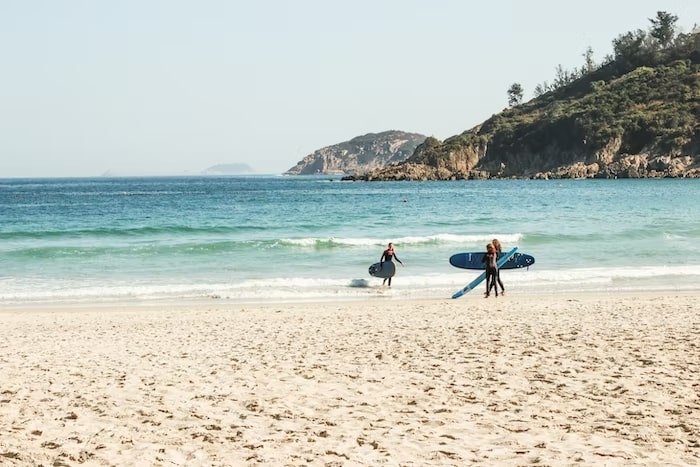
Some of Hong Kong’s natural wonders are in its bays and beaches found along its long coastline.
About half of these beaches are suitable for swimming, with some even allowing surfing and other water sports.
21. Hong Kong’s highest peak is an inactive volcano.
Tai Mo Shan is Hong Kong’s highest peak, standing tall at an elevation of 957 metres. Tai Mo Shan is an inactive volcano, with a nearby hill still venting warm all the way from the Earth’s mantle through a series of cracks and holes.
22. One of Hong Kong’s major tourist attractions is also a mountain peak.
Victoria Peak, also known as Mount Austin or simply “the Peak,” is a hill with an elevation of only 552 metres tall. However, its popularity is due to its stunning view of the cities with a backdrop of the harbour, which is perfect for watching the sunset.
23. Hong Kong is home to a handful of UNESCO geoparks.
These geoparks are outstanding and significant natural formations protected and conserved with nature-centred tourism. These include numerous mountains, rock formations, and other interesting sites such as Tung Ping Chau the flat island and the centuries-old Lai Chi Wo.
24. Hong Kong has the world’s most skyscrapers.
Hong Kong currently has 546 skyscrapers, the most in the world. In second place is Shenzhen, China, while New York, USA comes in third.
25. Rugby is a big deal in Hong Kong.
Hong Kong hosts an annual rugby tournament involving 28 teams from 22 countries. Hong Kongers also came up with fun and outlandish traditions, such as wearing weird costumes and eating and drinking excessively while partying in the Sevens Village near the stadium.
26. The Chinese New Year is also a big deal.
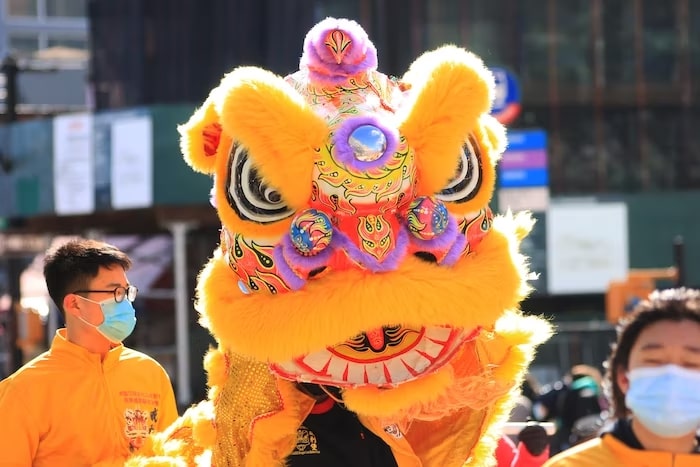
The Chinese New Year is one of the most important holidays in Hong Kong, which involves banquets and activities such as the Lion Dance, temple visits, and other rituals. This is also the time when families reunite, so businesses often close down or are very busy.
27. Hong Kong also has an iconic clock tower.
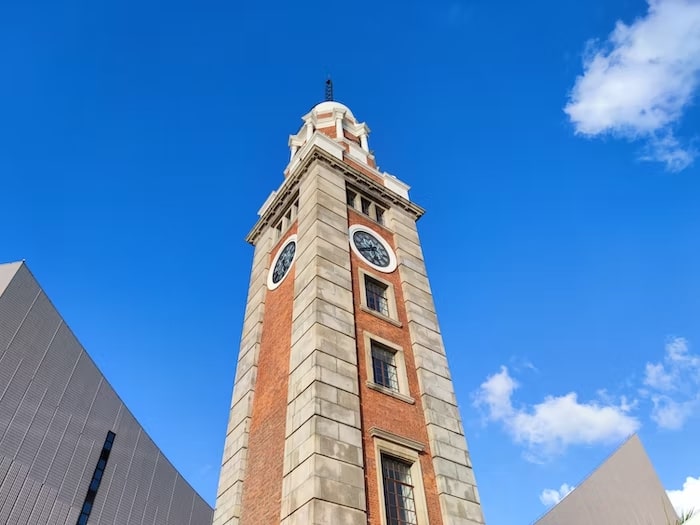
The Tsim Sha Tsui Clock Tower stands at a height of 44 metres and is the only remaining part of the former Kowloon station. Although its bell was removed, they recently resumed the use of the tower’s bell chimes which rings hourly from 8 AM until midnight.
28. Feng Shui is still practised.
Despite being highly urbanised and Westernised, a large chunk of Hong Kong’s population is still superstitious. Hong Kongers still practise Feng Shui to boost their luck, increase opportunities, or ward off unlucky energy.
29. Most Hong Kong buildings do not have 4th floors.
Don’t get us wrong, buildings in Hong Kong still have fourth floors; however, they are not numbered “four”. This is done because the word “four” in Cantonese sounds eerily similar to the word for death, which is unlucky.
30. The University of Hong Kong ranks as one of the best in Asia.
The University of Hong Kong is among the top schools in Asia, ranking in 4th place in the Times Higher Education Asia University Rankings in 2022. Also in the top 10 universities is the Hong Kong University of Science and Technology, which ranked 8th.
31. The longest outdoor escalator is in Hong Kong.
The Central-Mid-Levels escalator in Hong Kong is the world’s longest outdoor covered escalator, with a length of over 800 metres and an elevation of over 135 metres.
Interestingly enough, this escalator follows the slope of a hill, so you’re literally riding the system to climb a mountain.
32. The Star Ferry has been operational since the 1880s.
The Star Ferry, a beloved tourist attraction and ferry service in Hong Kong, was founded in 1888. For centuries, these ferries transport tens of thousands of passengers a day to and from Hong Kong’s various islands.
33. Hong Kong has the first funicular in Asia.
The Peak Tram began operation in 1888, making it the first cable funicular in Asia. It connects five stations over 1,350 metres and is currently used by tens of thousands of riders daily.
34. Hong Kong also has the largest operational double-decker tram fleet.
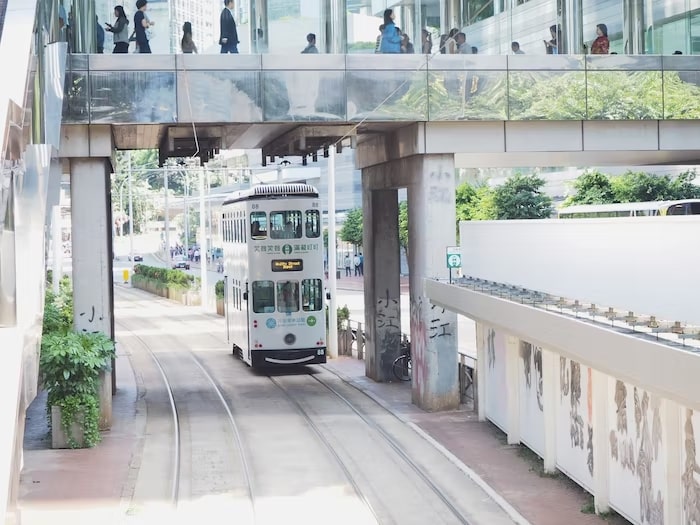
The Hong Kong Tramways has been in service since 1904 and uses exclusively electric-powered double-decker trams. The transit system transports over 100,000 commuters a day to a connection of 120 stations.
35. Hong Kong has one of the longest suspension bridges in the world.
The Tsing Ma Bridge is the 16th-longest suspension bridge in the world, although it was the second longest at the time of its completion. The bridge connects the islands of Tsing Yi and Ma Wan and spans 1,377 metres.
36. Hong Kong participates in the Olympics even though it’s not a country.
Despite not being a country itself, Hong Kong has been participating in the Olympics since 1952. Currently, Hong Kong has two gold medals, three silvers, and four bronzes.
37. Hong Kong operates in a mostly free-market economy.
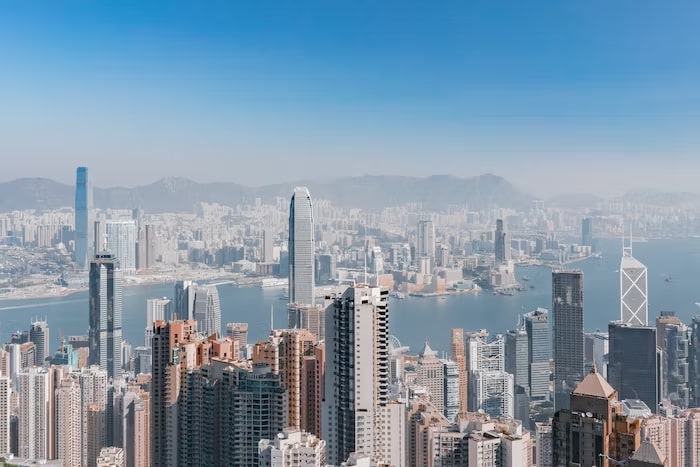
Unlike the socialist market economy employed in the mainland, Hong Kong uses a free-market capitalist economic system. Its low taxes, virtually nonexistent tariffs, and little government intervention allow the region to maintain its status as a central trading hub.
38. Mainland China is one of Hong Kong’s primary trading partners.
Despite their rocky relationship, mainland China and Hong Kong are primary partners when it comes to business imports and exports. Hong Kong also serves as a gateway for the international community to begin trading with the mainland.
39. Hong Kong changed industries over the years.
Before being a highly developed trading hub and finance and service industry, Hong Kong used to manufacture electronics, plastic items, and other products. It also used to be a powerhouse for exporting textiles and clothing.
40. Despite being a rich economy, Hong Kong relies on imports for most goods.
Hong Kong has only a few natural resources, so it relies on importation to get commodities such as food, fuel, and raw materials.
41. Groceries in Hong Kong are expensive!
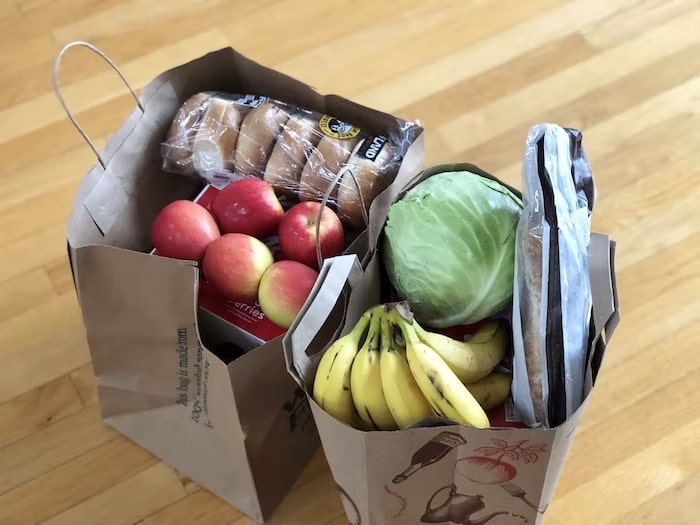
According to the South China Morning Post, Hong Kong is one of the places where fresh food is expensive. Compared to Singapore which also imports almost all goods, groceries in Hong Kong cost around 25% more.
42. Hong Kong also exports various goods worldwide.
Hong Kong’s primary export products include gold and electronics such as phones, machinery, and appliances.
43. Hong Kong has a lot of billionaires.
Hong Kong is currently ranked 3rd in housing the world’s most billionaires, with New York and Beijing claiming the top two spots. The richest resident in the region is Lee Shau Kee, who is worth $32.6 billion.
44. Hong Kong allegedly has the most Rolls Royce vehicles per capita
There is a commonly held belief that Hong Kong has the most Rolls Royce luxury vehicles. Although there are no specific research papers that back this up, it is a possibility since 1 in every 125 people in Hong Kong is worth $5 million.
45. Despite this, Hong Kong has one of the lowest car ownership rates.
According to a survey conducted by Rakuten Insight, only 34.1% of over 3,000 respondents owned a vehicle as of 2019. There is little need for cars anyway since the region has a good and inexpensive public transport system.
46. Hong Kong has the longest sea-crossing bridge in the world.

The Hong Kong – Zhuhai – Macau Bridge is the world’s longest bridge-tunnel system that crosses the seas, spanning over 55 kilometres and connecting three major cities in Asia.
47. Hong Kong has the world record for the highest swimming pool in a building.
The Ritz-Carlton Hotel in the International Commerce Centre of Hong Kong has a 20-metre-long swimming pool located on the building’s topmost floor.
48. Typhoons are fairly common in the region.
Hong Kong’s typhoon season runs from May to November, peaking at around May to September. Due to the frequency of these storms, Hong Kong has developed a highly advanced typhoon warning system that keeps its population safe.
49. Fibre optics was invented by a Hong Kong professor.
Sir Charles Kao Kuen, an engineer and physicist, was born in Shanghai and grew up in Hong Kong, where he was a permanent resident. Dubbed the father of fibre optics, Charles K. Kao discovered a way to use glass fibres to transmit data, paving the way for the Internet.
50. Hong Kong has a lot of restaurants.
There are over 15,000 restaurants in Hong Kong, 71 of which are included in the Michelin Guide of 2022.
51. Speaking of restaurants, Hong Kong has some of the most affordable Michelin-star restaurants in the world.

Establishments such as Tim Ho Wan, Kam Roast Goose, and Ho Hung Kee are popular high-quality restaurants in Hong Kong with meals available for as low as HKD 150 (USD 20).
52. Dim Sum originated near Hong Kong
It is believed that dim sum was first developed in Guangdong or Canton, and then eventually found its way to Hong Kong. As such, Hong Kong is one of the pioneering places for this beloved brunch meal.
53. Pineapple buns are widely popular in the region.
The pineapple bun is a sweet bun that is one of the most predominantly popular snacks in Hong Kong. The snack gets its name from its characteristic look and texture, not because of its filling.
In June 2014, the government of Hong Kong considered pineapple buns as a cultural heritage.
54. One of the largest Buddhas is in Hong Kong.
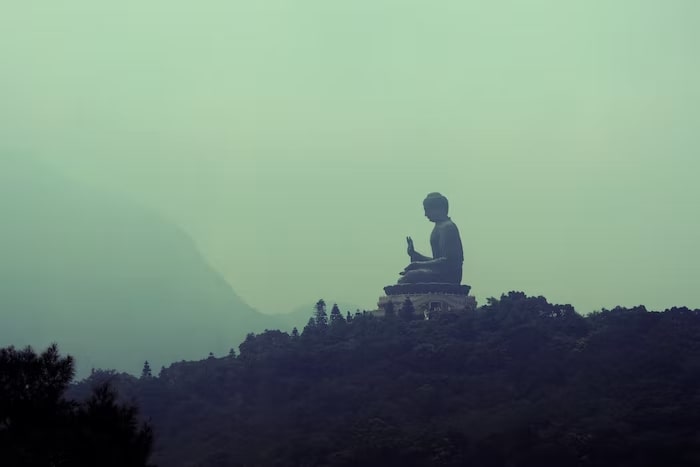
The Tian Tan Buddha, or the Big Buddha, is a bronze statue that stands (or in this case, sits) at a height of 34 metres. If you want to visit, you might want to bring water as you have to climb 268 steps before you reach the awesome sculpture.
55. Hong Kong has a Disneyland.
Hong Kong Disneyland is located in the Hong Kong Disneyland Resort, which is partly owned by the Government of Hong Kong. Despite being one of the most popular tourist attractions in the region, it has suffered a drop in visitors due to recent events.
56. Action films boosted Hong Kong’s film industry.
Most popular wuxia, kung fu, and martial arts films were produced in Hong Kong since the early 1900s. These movies peaked in the 1970s, during the rise of Bruce Lee, Jackie Chan, Jet Li, and other notable actors.
57. Hong Kong has its own music style.
Just like how Korea has K-pop, Hong Kong also has its own music called Cantopop or HK-pop. This genre of music began in the 1970s, declined in the early 2000s, but is now seeing a resurgence among the population.
58. Hong Kong is one of the richest cities in the world.
Hong Kong is in 12th place when it comes to being the wealthiest city in the world. It used to be 2nd to Tokyo in Asia but was overtaken by Singapore, Beijing, and other regions.
59. The Hong Kong International Airport is one of the busiest in the world.
The Hong Kong International Airport is the region’s main airport spanning over 3,800 metres or almost 20 football fields. It is the busiest cargo gateway in the world and one of the busiest passenger airports, with over a million passengers coming through each year.
60. Hong Kong is also the home of Cathay Pacific.
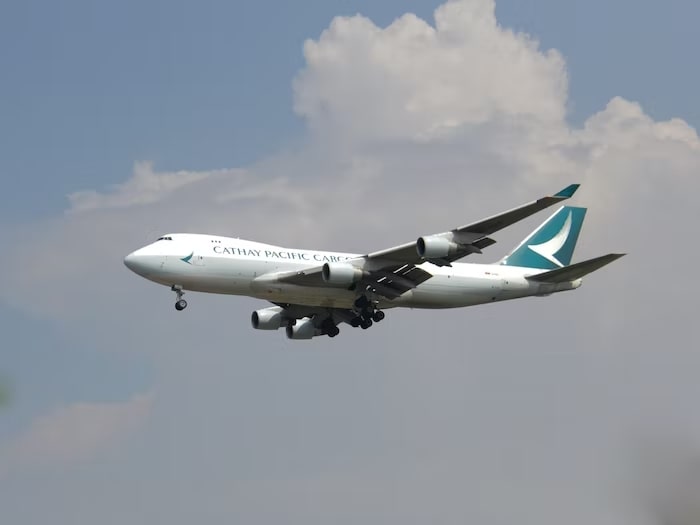
Cathay Pacific is the flag carrier of Hong Kong and is an award-winning airline known for its technology, safety, and pricing.
61. Hong Kong has the highest average IQ among its population.
According to multiple studies, Hong Kong’s population has an average IQ of 108. This puts the region in a tie with Singapore, with South Korea, Taiwan, and Japan at their tail.
62. Hong Kong is very strict with firearms.
In Hong Kong, citizens can only use firearms if they are members of a hunting or shooting club or join the police force. Even the members of clubs cannot bring their firearms home, as they have to leave their guns in a locked storage room within the club premises.
63. Hong Kong is also strict when it comes to tobacco.
Smoking is banned in most public places in Hong Kong. The government also banned tobacco companies from advertising their products.
Because of such moves, the prevalence of smoking is only 9.5% in Hong Kong compared to around 25% in the mainland.
64. Hong Kong’s education is free.
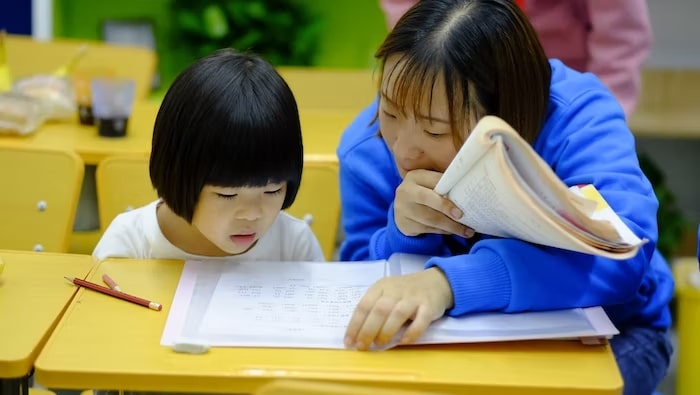
Education is mandatory for all children between the ages of 6 to 15 in Hong Kong. To encourage the region’s youth to attend school, the government provides 12 years of free primary and secondary education in the public sector.
65. Hong Kong is experiencing a grave shortage, in the literal sense.
Due to limited land, Hong Kong’s government banned the construction of new public cemeteries and burial sites. Public cemeteries are also ordered to exhume remains and cremate them to allow newcomers to be buried.
66. There are plaques in Hong Kong that commemorate a Philippine hero.
Jose Rizal, a novelist, doctor, and Philippine hero with Chinese roots has three markers tracing his steps in Hong Kong during his stay in the late 1800s.
67. Some museums in Hong Kong offer free entrance on Wednesdays.
Museums such as the Hong Kong Museum of Art, the Hong Kong Museum of History, and the Hong Kong Space Museum offer free admission to the public every Wednesday. If you happen to get there on a different day, there are some discounts that you can avail of.
68. Some Hong Kongers have English names.
If you are a foreigner visiting Hong Kong, you might be surprised to know that some locals have adopted English names. This is actually a common occurrence especially when the locals are dealing with foreigners.
These English names may or may not be an actual part of the Hong Konger’s legal name. Feel free to use these instead during conversations.
69. Some teachers in Hong Kong are foreigners.
Hong Kong has a system called the Native-speaking English Teacher scheme where government and government-subsidised schools employ English teachers from abroad to help the region’s children improve their command of the language.
69. Hong Kong has a housing crisis.

Due to soaring land and rent prices worsened by a lack of space, most Hong Kongers live in cramped apartment buildings, rooftop tents, and cage homes. Hong Kongers still experience scarcity despite government subsidies.
70. Hong Kongers work long hours.
According to multiple studies, Hong Kongers are some of the most overworked labourers in the world. Most workers in Hong Kong put in around 40 to 50 hours a week, depending on the industry.
71. There is a mass exodus happening in Hong Kong.
Since the COVID-19 pandemic began, more and more Hong Kongers are leaving the region because of strict policies. Even though the government has since loosened its policies, many locals that have left are yet to come back.

